National Marrow Donor Day 2025, or how to donate bone marrow
Everything you need to know about bone marrow donation - from registration to donation and recovery.


Learn more about our editorial process
.

Learn more about our editorial process
.

Learn more about our editorial process
.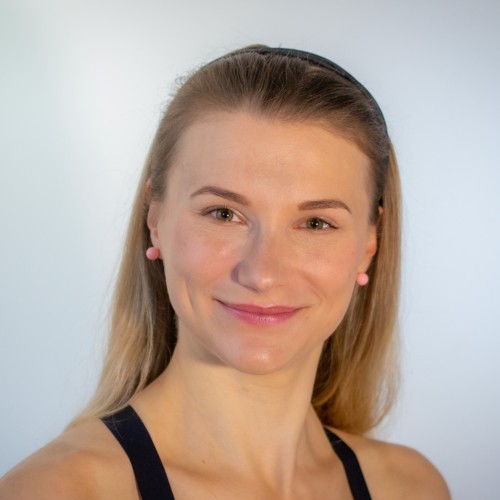

Learn more about our editorial process
.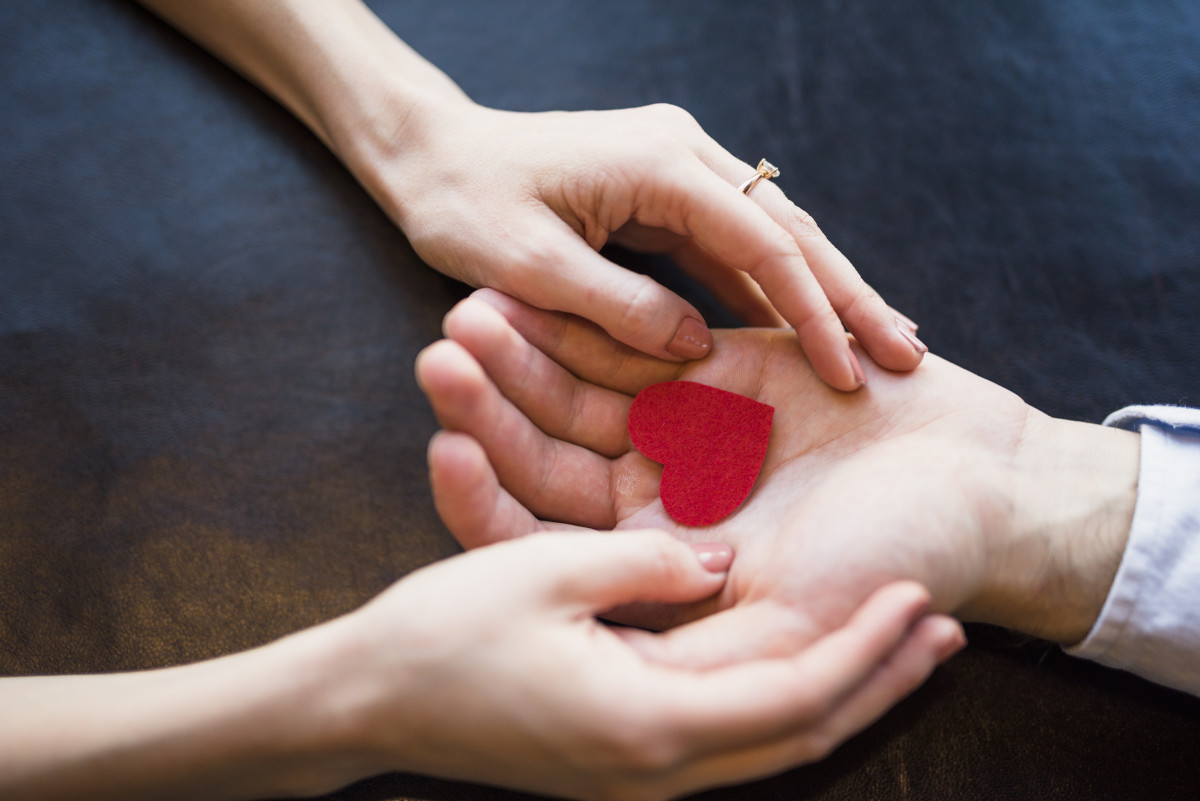
Why you can trust us
Articles on Natu.Care are written based on scientific research, data from government websites and other reliable sources. The texts are written in cooperation with doctors, nutritionists and other health and beauty experts. Articles are reviewed before publication and during significant updates.
.Learn more about our editorial process
.Information about advertisements
Content on Natu.Care may contain links to products from the sale of which we may receive a commission. When creating content, we adhere to high editorial standards and take care to be objective about the products discussed. The presence of affiliate links is not dictated by our partners, and we select the products we review ourselves completely independently.
.Learn more about our terms and Conditions
.Bone marrow cells (like blood) are a valuable medicine that we cannot produce artificially. And is often the only chance of life for patients who need it.
Unlike blood, bone marrow is not donated in stock. There are also no banks to store it. When a patient needs a transplant, the process of finding a compatible donor is triggered. Therefore, the whole strength of effective bone marrow stem cell treatment lies in the largest possible database of registered potential donors.
Swallow a pill of knowledge on how to join the ranks of heroes - created in collaboration with DKMS Foundation experts.
From this article you will learn:
- What is bone marrow and what functions it performs in the body. .
- How many potential bone marrow donors are registered in the Polish and global database.
- Who can become a bone marrow donor?
- Who can become a donor and what are the contraindications. .
- How the registration procedure in the bone marrow donor database looks like. .
- How the donation of bone marrow and haematopoietic stem cells proceeds.
- How the donation of bone marrow and haematopoietic stem cells proceeds.
- What the donor is entitled to after the bone marrow donation. .
- Whether bone marrow donation hurts and whether it is safe.
- How to donate bone marrow.
See also:
- World Blood Donor Day
- Cervical Cancer Awareness Week .
- Clean Air Day
- World No Mobile Phone Day
- Of singles on Valentine's Day
- Great Bee Day
- Fish Day
- National Kindergarten Day
National Marrow Donor Day
.Since 2002, 13 October has been celebrated as National Marrow Donor Day in Poland. But this is not the only date we should remember. Donors of life-giving blood-forming cells have another holiday: World Marrow Donor Day, celebrated on the third Saturday of September. In 2024, it falls on 21 September.
Listen to an interview with Emilia Moskal for Polish Radio Koszalin:
. .DKMS is an international organisation that is a bone marrow donor registry and helps patients with blood cancers and other hematopoietic diseases. It currently operates in seven countries around the world:
- Poland, .
- Germany, .
- United Kingdom, .
- USA, .
- Chile, .
- India, .
- South Africa, .
What is bone marrow and who can it save a life?
.Bone marrow is a spongy and highly circulated tissue found inside bones. Most bone marrow is found in the marrow cavities of flat and long bones. On average, an adult human has as much as 2.5 kilograms of bone marrowand.
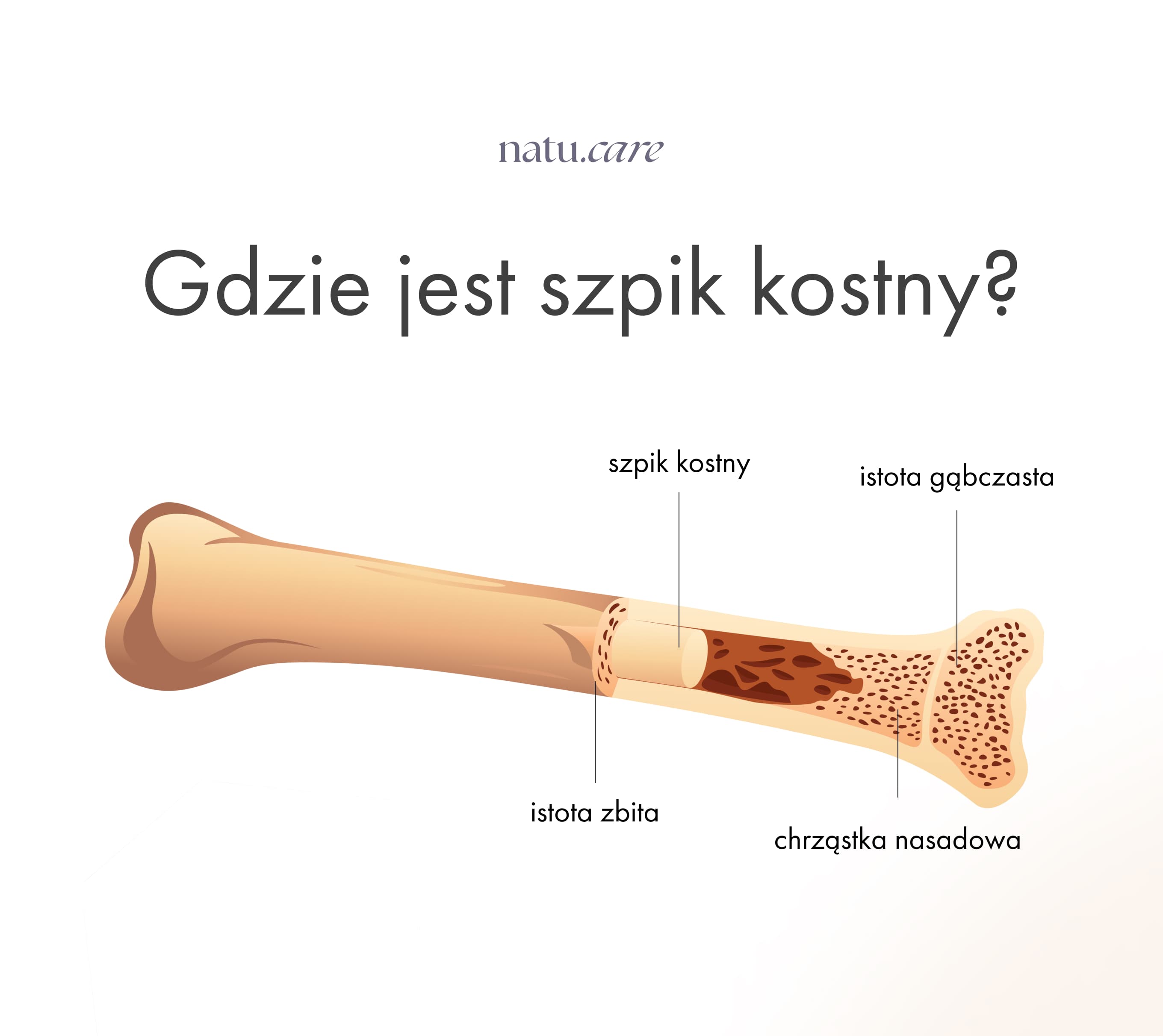
The primary function of the bone marrow is to produce the morphotic elements of the blood, i.e. the cells that make up the blood. Proper bone marrow function ensures that erythrocytes, leukocytes, thrombocytes and other blood cells can effectively transport oxygen and nutrients throughout the body and fight infections and pathogensand.
.Unfortunately, the bone marrow is not always able to produce adequate amounts of healthy blood cells. Certain types of cancer, as well as genetic diseases, impair the bone marrow's ability to work properly. When this happens, a bone marrow transplantand is often the only treatment option.
Although I will point out straight away that this colloquial term is not entirely correct. This is because, from a medical point of view, we are talking about transplantation of haematopoietic stem cells into the bone marrow, i.e. those responsible for the production of morphotic elements (let's simplify: blood cells).
Today, this is a procedure that is used to produce blood cells.
Today, it is a treatment for more than 200 cancerous and non-cancerous diseases. Among the most common are:
- leukaemias, .
- lymphomas, .
- myelomas, .
- osteomyelofibrosis, .
- severe forms of aplastic anaemia, .
- inherited immunodeficiency disorders,
- inherited immunodeficiency
- congenital anaemias, .
Important
Bone marrow transplant saves lives. For patients with haematopoietic diseases and blood cancers, it is often the only treatment option. By donating haematopoietic stem cells, you are giving someone a second chance at life.
Important
.
See also:
Natu.Care Collagen Premium 5000 mg, mango & passion fruit

- Collagen content: 5000 mg marine collagen hydrolysate
- Additional active ingredients: vitamin C, low molecular weight hyaluronic acid (and L-theanine and coenzyme Q10 in cocoa flavoured collagen or vitamin A and vitamin E in mango–passion fruit flavoured collagen)
- Form: powder sachets
- Dose: 1 sachet per day
- Sufficient for: 30 days
Product description
Fish collagen from the Natu.Care brand in a dose of 5000 mg, based on certified ingredients of the best quality. Regular supplementation will positively influence the appearance of the skinóry, hairów and nails – they will be rebuilt and strengthened from the inside.
In addition to collagen, which is valuable for health and beauty, it also offers other active ingredients that help to maintain a youthful complexion, shiny hair and strong nails.
The formula contains a sufficient portion of the active ingredient to positively affect joints, the musculoskeletal system and immunity.
Natu.Care Premium Collagen is available in two flavours – Cacao Bloom and Rise&Shine. Both formulas are based on the following active ingredients: marine collagen hydrolysate, wild roseóbud extract and hyaluronic acid.
Additionally, Cacao Bloom contains natural L-theanine, coenzyme Q10 and defatted Dutch cacao. Rise&Shine instead contains vitamin E and vitamin A.
These are the best collagens in the world.
These best fish collagens on the market also rós taste – Cacao Bloom is a treat for chocolate lovers. Rise&Shine will appeal to those whoólike the refreshing taste of mangoófruit and passion fruit.
Pros and cons
Pros:
- Vitamin C supports the body's collagen production, enhancing its effectiveness.
- An effective dose of hyaluronic acid, which additionally supports skin hydration and joint health.
- Fish collagen absorbs 50% better. Additionally, the manufacturer specifies the fish species it is sourced from (Atlantic cod).
- The composition has been tested by the independent and accredited J.S. Hamilton laboratory.
- MSC (Marine Stewardship Council) quality certification, which confirms that the collagen source supports sustainable fishing practices.
Cons:
- None.
Additional information
Natu.Care's fish collagen receives praise for its delicious taste. You won't find the fishy aftertaste that often comes through in other collagens. Plus, you have two tasty flavors to choose from: cocoa and mango-passionfruit.
Active ingredients like coenzyme Q10, hyaluronic acid, and natural L-theanine provide anti-inflammatory and antioxidant benefits while slowing down aging processes.
User review
Super, after about 6 weeks of use, the skin on my face became noticeably firmer. Wonderful taste.
Ania ZalewskaNatu.Care customer
Natu.Care Premium collagen 10 000 mg, mango-maracuja

- Collagen content: 10,000 mg marine collagen hydrolysate
- Additional active ingredients: vitamin C, low molecular weight hyaluronic acid (and L-theanine and coenzyme Q10 in cocoa flavoured collagen or vitamin A and vitamin E in mango–passion fruit flavoured collagen)
- Form: powder sachets
- Dose: 1 sachet per day
- Sufficient for: 30 days
Product description
One of the strongest collagens on the market, whichós provides as much as 10,000 mg in a daily serving. This allows the formula to effectively support the condition of the skin, hair and nails.
With this supplement, you will support your beauty, which will allow you to visually stop the ageing process and feel a second youth!
Natu.Care Collagen Premium 10 000 mg comes in two flavours – cherry and mango-maracuja. Both formulas have the same product backbone – collagen, hyaluronic acid and vitamin C.
In the cherry version you additionally find glucosamine, chondroitin and Indian frankincense resin extract. Mango-maracuja, on the other hand, contains vitamin E and vitamin A.
Pros and cons
Pros:
- Tested collagen formula – SeaGarden, whose effects have been confirmed in clinical studies.
- Effective dose of hyaluronic acid, additionally moisturizing the skin and positively impacting joint health.
- Vitamin C supports the body’s natural collagen production.
- The composition has been tested by the independent and accredited J.S. Hamilton laboratory.
- The product has an MSC (Marine Stewardship Council) quality certification – the collagen source supports sustainable fishing practices.
Cons:
- None.
Additional information
Users praise Natu.Care Collagen Premium for the easy dissolvability of the powder.
User review
I noticed a significant improvement in my skin texture after a few weeks of taking collagen regularly. My complexion is now as soft as velvet!
Natu.Care Collagen Premium 10000 mg, cherry
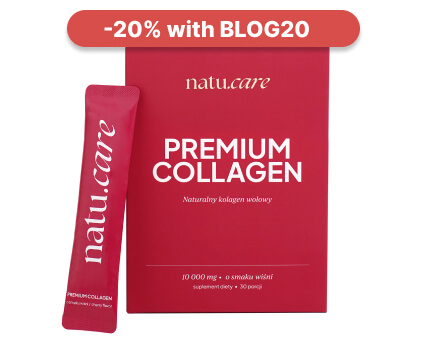
- Collagen content: 10,000 mg of hydrolyzed bovine collagen
- Additional active ingredients: vitamin C, low molecular weight hyaluronic acid, glucosamine, chondroitin, extract of Indian frankincense resin (boswellia serrata)
- Form: powder sachets for drinking
- Serving: 1 sachet per day
- Lasts for: 30 days
Product description
One of the strongest collagens on the market, providing as much as 10,000 mg per daily serving. This product can effectively support the condition of joints, skin, hair, and nails.
With this supplement, you will support your skeletal and joint system as well as your beauty, helping you visually halt the aging process and feel rejuvenated!
Pros and cons
Pros:
- The daily portion of collagen is very large – as much as 10,000 mg.
- Proven collagen formula – COLLinstant, whose effectiveness has been confirmed in clinical studies.
- Effective dose of hyaluronic acid, which additionally moisturizes the skin and positively affects joint health.
- Vitamin C supports the body's natural collagen production.
- Glucosamine is a fundamental building block of compounds found in joint cartilage and a component of collagen that gives elasticity to connective tissue in tendons.
- Chondroitin is a natural component found in the human body, mainly in cartilage. This large molecule (mucopolysaccharide) has the ability to absorb water, which helps maintain the elasticity and resilience of cartilage.
- Frankincense resin extract supports blood circulation and joint mobility and reduces their stiffness. It may help alleviate inflammatory conditions.
- The composition has been tested by the independent and accredited J.S. Hamilton laboratory.
Cons:
- None.
Additional information
Users praise Natu.Care Collagen Premium for the easy dissolving of the powder.
Premium Sodium Butyrate
Product description
Premium Sodium Butyrate is a natural support for your digestive system. With a high dose of butyric acid (940 mg), it supports the regeneration of the intestinal mucosa, improving gut health and function, and aids in the absorption of nutrients. By taking care of your intestines, you're taking care of the health of your entire body.
Studies involving people suffering from irritable bowel syndrome confirm that sodium butyrate is ideal for supporting issues related to bacterial flora imbalances (for example, after antibiotic therapy), constipation and diarrhea, inflammation of the intestinal mucosa, or a diet low in fiber.
Premium Sodium Butyrate capsules are made using the innovative DRcaps® technology. This guarantees that the active ingredients in the product are protected from the destructive effects of stomach acids and digestive enzymes. As a result, we can be sure that the beneficial ingredients are released in the small intestine and are fully absorbed by our body.
Premium Sodium Butyrate from Natu Care is 100% tested, and its composition contains only the highest quality raw materials.
Pros and cons
Pros:
- Supports digestive system function
- Helpful for various gastrointestinal conditions, including IBS
- High dose of butyric acid in each capsule
- Eco-friendly, clean, and tested composition
- Free from added sugar, gluten, GMOs, and lactose
- Innovative capsule technology - DRcaps
Cons:
- None
Additional Information
Take 3 capsules daily at any time of the day, preferably with a meal. Swallow the capsules whole with water.
Premium Sodium Butyrate is intended for adults.
The product should be used under medical supervision.
User review
I've been using the product for 2 weeks. My stomach feels lighter, and my digestion has improved. I recommend it.
Natu.Care Premium Magnesium + Vitamin B6
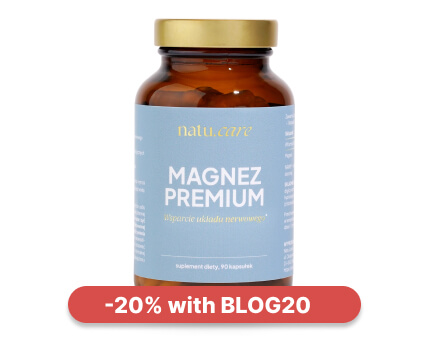
- Magnesium content per day: 305 mg
- Additional active ingredients: Vitamin B6 (2.1 mg)
- Form: capsules
- Serving size: 3 capsules per day
- Sufficient for: 30 days
Product description
The Premium Magnesium + Vitamin B6 dietary supplement is a comprehensive product that combines three organic forms of magnesium (citrate, malate, and diglycinate) and vitamin B6 in highly absorbable forms.
Magnesium is an essential mineral without which our bodies cannot function properly. It supports the immune, nervous, and muscular systems, maintains electrolyte balance, and is involved in cell division and the regulation of mental functions.
Research shows that magnesium supplementation is even more effective when accompanied by vitamin B6, which is included in our product. Vitamin B6 is responsible for the proper functioning of the nervous and immune systems, as well as the proper functioning of the heart.
If you want to safely get rid of feelings of fatigue, concentration problems, hair loss, muscle cramps, trembling, or irritability, reach for Premium Magnesium from Natu.Care, tested by the independent, certified laboratory J.S. Hamilton Poland.
Pros and cons
Pros
- Supports the proper functioning of the nervous and immune systems.
- Reduces feelings of fatigue and tiredness.
- Maintains proper psychological functions.
- The purity of the ingredients (free from anti-caking agents, artificial fillers, and additives such as titanium dioxide, microcrystalline cellulose, talc, magnesium stearate, and silicon dioxide) has been confirmed by laboratory tests.
- High absorption of ingredients.
- Soft capsules that are easy to swallow.
- Suitable for vegetarians and vegans.
Cons
- None.
Additional information
Take with a meal, 3 capsules per day.
The capsules should be taken with at least 250 ml of water.
If you have trouble sleeping, it is advisable to take 1 capsule in the morning and 2 capsules in the evening, no later than 4 hours before bedtime.
Avoid combining with products high in calcium (milk, yogurt, cheese), as this may negatively affect magnesium absorption.
Pregnant and breastfeeding women should consult a doctor before starting supplementation.
User review
I’m very impressed with the speed of delivery. The product itself is of high quality and absorbs well. After two weeks of supplementation, I’ve noticed a significant improvement in muscle recovery, especially during periods of intense training. I highly recommend it!
Product description
The dietary supplement contains omega-3ᵀᴳ, or omega-3 acids in the form of trójglyceridesów. Scientific studies suggest that this form of fatty acidsós up to 2 times better absorbed than the estersós present in many dietary supplements on the market. This means that you are assured of their effectiveness and of supplying yourself with valuable omega acids.
Fatty acids omega-3 are derived from wild anchovy oil. It is a rich source of healthy fats that are essential for the health of the cardiovascular, immune and nervous systems, as well as the proper function of vision, joints muscles.
Scientific research suggests that wild anchovies are a good source of healthy fats.
Scientific research also suggests that an adequate intake of omega-3 fatty acidsós protects against and supports the treatment of depression and anxiety disorders. In addition, omega-3s influence the hydration and appearance of the skinóry and support healthy sleep.
.
The formula contains a total of 750 mg of EPA+DHA acidsós, which is three times higher than the recommended minimum of 250 mg for the Polish population. Omega-3 TG Premium has studies indicating that its TOTOX is 9, which is a very good result.
Supplementation of omega-3 fatty acidsóis recommended for anyone who does not eat 1–2 portions (approximately 300 g) of oily fish per week. Children during growth, seniors, physically active people, vegans and vegetarians, as well as patients undergoing cardiovascular treatment and prevention of heart disease also have an increased need.
Pros and cons
The dietary supplement contains omega-3ᵀᴳ, or omega-3 acids in the form of trójglyceridesów. Scientific studies suggest that this form of fatty acidsós up to 2 times better absorbed than the estersós present in many dietary supplements on the market. This means that you are assured of their effectiveness and of supplying yourself with valuable omega acids.
Fatty acids omega-3 are derived from wild anchovy oil. It is a rich source of healthy fats that are essential for the health of the cardiovascular, immune and nervous systems, as well as the proper function of vision, joints muscles.
Scientific research suggests that wild anchovies are a good source of healthy fats.
Scientific research also suggests that an adequate intake of omega-3 fatty acidsós protects against and supports the treatment of depression and anxiety disorders. In addition, omega-3s influence the hydration and appearance of the skinóry and support healthy sleep.
.
The formula contains a total of 750 mg of EPA+DHA acidsós, which is three times higher than the recommended minimum of 250 mg for the Polish population. Omega-3 TG Premium has studies indicating that its TOTOX is 9, which is a very good result.
Supplementation of omega-3 fatty acidsóis recommended for anyone who does not eat 1–2 portions (approximately 300 g) of oily fish per week. Children during growth, seniors, physically active people, vegans and vegetarians, as well as patients undergoing cardiovascular treatment and prevention of heart disease also have an increased need.
Additional information
The dietary supplement contains omega-3ᵀᴳ, or omega-3 acids in the form of trójglyceridesów. Scientific studies suggest that this form of fatty acidsós up to 2 times better absorbed than the estersós present in many dietary supplements on the market. This means that you are assured of their effectiveness and of supplying yourself with valuable omega acids.
Fatty acids omega-3 are derived from wild anchovy oil. It is a rich source of healthy fats that are essential for the health of the cardiovascular, immune and nervous systems, as well as the proper function of vision, joints muscles.
Scientific research suggests that wild anchovies are a good source of healthy fats.
Scientific research also suggests that an adequate intake of omega-3 fatty acidsós protects against and supports the treatment of depression and anxiety disorders. In addition, omega-3s influence the hydration and appearance of the skinóry and support healthy sleep.
.
The formula contains a total of 750 mg of EPA+DHA acidsós, which is three times higher than the recommended minimum of 250 mg for the Polish population. Omega-3 TG Premium has studies indicating that its TOTOX is 9, which is a very good result.
Supplementation of omega-3 fatty acidsóis recommended for anyone who does not eat 1–2 portions (approximately 300 g) of oily fish per week. Children during growth, seniors, physically active people, vegans and vegetarians, as well as patients undergoing cardiovascular treatment and prevention of heart disease also have an increased need.
Expert opinion
The dietary supplement contains omega-3ᵀᴳ, or omega-3 acids in the form of trójglyceridesów. Scientific studies suggest that this form of fatty acidsós up to 2 times better absorbed than the estersós present in many dietary supplements on the market. This means that you are assured of their effectiveness and of supplying yourself with valuable omega acids.
Fatty acids omega-3 are derived from wild anchovy oil. It is a rich source of healthy fats that are essential for the health of the cardiovascular, immune and nervous systems, as well as the proper function of vision, joints muscles.
Scientific research suggests that wild anchovies are a good source of healthy fats.
Scientific research also suggests that an adequate intake of omega-3 fatty acidsós protects against and supports the treatment of depression and anxiety disorders. In addition, omega-3s influence the hydration and appearance of the skinóry and support healthy sleep.
.
The formula contains a total of 750 mg of EPA+DHA acidsós, which is three times higher than the recommended minimum of 250 mg for the Polish population. Omega-3 TG Premium has studies indicating that its TOTOX is 9, which is a very good result.
Supplementation of omega-3 fatty acidsóis recommended for anyone who does not eat 1–2 portions (approximately 300 g) of oily fish per week. Children during growth, seniors, physically active people, vegans and vegetarians, as well as patients undergoing cardiovascular treatment and prevention of heart disease also have an increased need.
Natu.Care Vitamin D 2000 UI
Product description
Vitamin D plays a crucial role in our health and well-being. It affects calcium and phosphate metabolism, which translates to healthy bones and teeth. It also helps regulate the immune system, and studies indicate its influence on the functioning of the nervous system.
Vitamin D, although called a “vitamin,” is actually a prohormone that our body produces on its own, primarily under the influence of sunlight. Unfortunately, our modern lifestyle contributes to deficiencies of this essential vitamin. Working in enclosed office buildings, using (necessary!) SPF creams, and covering the body with clothing all make it very difficult, if not impossible, to obtain adequate levels of vitamin D from sunlight. This is why appropriate, year-round supplementation is so crucial.
Vitamin D from Natu.Care is a well-tested vitamin D3 suspended in safflower oil, a plant known for its numerous health benefits. The convenient, easy-to-swallow capsule will make supplementation a part of your daily, healthy routine, improving your overall well-being.
Pros and cons
Pros:
- Ensures proper functioning of the immune system
- Supports the maintenance of healthy bones and teeth
- Maintains proper heart, kidney, and muscle function
- Tested by an independent, certified laboratory
- Convenient and easy-to-swallow capsule
- Clean composition - free from added sugar, gluten, GMOs, lactose, and without preservatives or colorants
Cons:
- None.
Additional Information
Pregnant women and breastfeeding mothers should consult a doctor before using the product. This dietary supplement is intended for a healthy adult population up to the age of 75.
Collagen Booster - Glow Stories

- Active ingredients: bamboo shoot extract, Quatrefolic®, L-Methionine, L-cysteine, vitamin E, vitamin A, niacin (vitamin B3), vitamin B6, vitamin B2 (riboflavin), biotin, zinc, copper
- .
- Form: capsules
- .
- Dose: 1 capsule per day
- .
- Sufficient for: 60 days
- .
Product description
A dietary supplement containing vitamins, minerals and plant extracts thatósupport the skinóhand, hair and nails. The product is especially distinguished by the form of folate – it is Quatrefolic, whichós absorbed very well and is natural.
In addition to valuable vitamins and minerals, such as vitamin A, E, B3, B2 and biotin, the formula contains bamboo shoot extract, whichóry further enhances your beauty.
Pros and cons
A dietary supplement containing vitamins, minerals and plant extracts thatósupport the skinóhand, hair and nails. The product is especially distinguished by the form of folate – it is Quatrefolic, whichós absorbed very well and is natural.
In addition to valuable vitamins and minerals, such as vitamin A, E, B3, B2 and biotin, the formula contains bamboo shoot extract, whichóry further enhances your beauty.
Additional information
A dietary supplement containing vitamins, minerals and plant extracts thatósupport the skinóhand, hair and nails. The product is especially distinguished by the form of folate – it is Quatrefolic, whichós absorbed very well and is natural.
In addition to valuable vitamins and minerals, such as vitamin A, E, B3, B2 and biotin, the formula contains bamboo shoot extract, whichóry further enhances your beauty.
Bone marrow donation statistics
.In Poland
.Today, more than 2,160,000 potential donors of haematopoietic stem cells are registered in the Central Register of Unrelated Potential Donors of Marrow and Cord Blood (as of 31.07.2023). Compared to the beginning of 2018. the number of potential donors in Poland has increased by more than 56%and.

Despite this significant increase in the number of donors, according to data from the DKMS Foundation, still one in five patients cannot find a suitable donorand. According to Poltransplant data, 1,061 donations of haematopoietic stem cells were performed for patients in Poland and around the world in 2022. At the same time, 798 allogeneic transplants of hematopoietic stem cells were performedand.
In the world
.As of 21 August 2023, there were 40,572,062 people registered in the global bone marrow donor registry. Considering that the world's population surpassed 8 billion last year, this is only about 0.5% of the population.
Comparing the current number of donors worldwide with 2018, an increase of 13% is recordedand. With more than 56% growth recorded in Poland during this period, we may have reason to be proud (but not to declare full success and stop the activity).

Who can become a bone marrow donor?
.According to Polish law, any healthy adult with full legal capacityand can become a bone marrow donor. As a general rule, donations can be made up to the age of 60 . The cut-off age is set by the organisation responsible for coordinating the bone marrow donation (which is usually the one you registered with).
Contraindications to bone marrow donation
.For legal reasons, people who are partially or totally incapacitated are unable to give proper consent to tissue donation and are therefore excluded from donation.
Other contraindications are those arising from a medical condition. See these most common onesand:
Exception
Exception
|
Cause . |
||||
|
Diabetes (all types) . |
Gestational diabetes if passed after delivery. | Gestational diabetes if passed after delivery. |
||
| . |
Individual decision dependent .cause of hyperthyroidism and history .treatment . |
|||
|
Viral inflammation of hepatitis (hepatitis) types B and C |
- . |
|||
|
Autoimmune diseases |
Single organ autoimmune diseases with a mild course, e.g. Hashimoto's disease. | Autoimmune diseases involving a single organ with a mild course. |
||
|
Asthma . |
If the disease is well controlled, after consultation with a physician, the patient may be qualified as a donor. | If the disease is well controlled, after consultation with a physician, the patient may be qualified as a donor. |
||
|
Hypertension . |
If the disease is well controlled, after consultation with a physician, the patient may be qualified as a donor. | If the disease is well controlled, after consultation with a physician, the patient may be qualified as a donor. |
||
|
Allergy |
If the disease is well controlled, after consultation with a physician, the patient may be qualified as a donor. |
|||
|
HIV infection . |
- . |
|||
|
All cancers (ongoing or past) |
- |
|||
|
Previous heart attack and stroke |
- . |
|||
|
Deep vein thrombosis |
- |
|||
|
Nephrolithiasis |
- . |
|||
|
Rheumatoid arthritis (RA) . |
- |
|||
|
Some mental illnesses |
Decision dependent on diagnosis and treatment used. | Decision dependent on diagnosis and treatment used. |
||
|
Obesity (BMI over 40) . |
- |
|||
|
Underweight (BMI less than 18.5) . |
- |
|||
|
Alcohol, drug and medication addiction |
Multi-year period of abstinence and absence of health complications, resulting from addiction. |
Step-by-step bone marrow donation
.Are you healthy, of legal age and feel the power of a true superhero within you? Great! But you also have some doubts, because you don't know what such a bone marrow donation is like, whether it hurts and involves a hospital stay... Everyone has doubts, that's why you are about to see how the whole process looks like step by step.

Why do patients need you too?
.More than two million donors in the database... You may be thinking: Well, I don't need to register anymore. Wrong: it is you who may prove to be indispensable for... your genetic twin.
.Unfortunately, not every hematopoietic stem cell fits everyone. In order for the body not to reject the transplant, the donor and recipient must show a HLA tissue marker match. This is why finding a suitable donor is so difficultand.
In the first instance, a suitable donor is sought from the patient's family (first among siblings). According to the DKMS Foundation, only 25% of people find a suitable person for donation in this way. For the remaining 75% of patients, rescue has to be sought among unrelated donors, registered worldwideand.
.Based on information from the DKMS Foundation, the probability of finding a compatible donor among unrelated individuals is 1 in 20 000, and for extremely rare genotypes it can be as high as 1 in several million. The more people registered, the greater the chance of finding a genetic twin.
Potential donor
.If you would like to join the ranks of Second Life Donors (commonly known as bone marrow donors), the first thing you need to do is register with the donor database. You can do this online using, for example, the DKMS Foundation website <click here to be taken to the registration page>.
Respond to a few questions and order a registration pack to take home. In it you will find an envelope and sticks to take a swab and a registration form. The package and its dispatch are completely free of charge.
The package will be sent to you free of charge.
When you receive the packet, carefully read the enclosed information (including the listed health contraindications) and complete the enclosed form. Then take a swab of the oral mucosa. Rub the swab on the inside of your cheek for one minute with the stick provided. Repeat three times (there are 3 sticks in the pack). Dry the sticks and then place them in the special envelope and close tightly.
.You don't need to memorise this - you will also get detailed instructions on how to take the swab in the pack. Wrap the form and your DNA sample in an envelope (also included in the pack) and send it to the address provided (postage is already paid for, so there is no cost to you).
Within a couple of weeks (in a few weeks), you will receive your DNA sample.
In a few weeks (maximum 3 months), the swab will be tested for HLA tissue compatibility antigens. The details you have provided on the form will also be checked. On this basis, you will be added to the pool of potential donors and entered into the relevant database.
When the entire screening, testing and checking procedure has been completed, you will be notified by emailand.
.Remember that you can only register for the bone marrow donor database once! If you have already done so, there is no need to join another donor centre..
Grzegorz HenslerDoctor of the DKMS Foundation
.Important
You can also register in the database of bone marrow donors stationary - by going to the nearest Regional Centre for Blood Donation and Haematology or by taking advantage of local, dedicated actions.
Contact saves lives
.One important point: your haematopoietic stem cells may be needed very soon, but it may also be the case that your genetic twin may need you in a few or even several years. It is therefore very important to remember to update your contact details in the donor database.
If you have registered for the DKMS Foundation database, you can update your details by completing the online form <go to form page> or by sending an email to aktualizacja@dkms.pl. If the person coordinating the intake process is unable to contact you, your registration will be in vain.
Factual donor
.If it turns out that your haematopoietic stem cells are needed by someone else, you will be notified by phone (usually) and email. If you maintain your decision to donate bone marrow, the first stage of the procedure will be initiated. Its purpose is to pre-verify your health and confirm the match between you and the patient needing a transplantand.
.During your interview with the procedure coordinator, you will once again be explained how to collect your stem cells and you will be asked to complete a health questionnaire to ensure there are no contraindications to donation..
Grzegorz HenslerDr. of the DKMS Foundation
You will also be asked to take blood tests. You can usually arrange with the coordinating person the most convenient place for you to have your blood drawn, in the area where you live. Your blood will again undergo compatibility tests with the recipient and viral testingand.
If, after the blood tests, you are found to be the best match for the recipient, the transplant donation coordinator will contact you to arrange a bone marrow stem cell donation.
Hematopoietic stem cell donation
.From the time of the blood tests to the day of the haematopoietic stem cell donation, it can take several weeks or even months. The patient's (recipient's) health status is crucial. It is the doctors caring for the patient who decide when the marrow can be collected and transplanted. It is also up to them to decide on the method of collecting the haematopoietic cells - if you agree to both methods of collection and there are no health restrictions in this regard.
Spatter, or more specifically haematopoietic stem cells, can be collected from the donor in two ways: from the peripheral blood or from the hip plate.
Normally, about two weeks before the stem cell donation, you will undergo a number of further tests to ensure that your health is unchallenged and you are safe to qualify for donation. Among other things, the following will be performed:
- detailed blood test,
- USG scan of the abdomen, .
- RTG of the chest, .
- ECG at rest, .
- The bone marrow is the main haematopoietic organ in the human body.
- The bone marrow is the main blood-forming organ in the human body.
- Some cancers and other diseases of the haematopoietic system can impair bone marrow function and are life-threatening for patients.
- Some cancers and other diseases of the haematopoietic system can impair bone marrow function and are life-threatening for patients.
- Bone marrow transplantation is the only lifesaver for many patients.
- Bone marrow transplantation is the only lifesaver for many patients.
- To donate bone marrow, you must register as a potential bone marrow donor. You will then be included in the international donor database.
- Transplantation is a great way of saving many patients.
- Bone marrow transplantation is only possible if the donor and recipient match in terms of HLA tissue compatibility antigens. .
- Donation can be carried out in two ways: most commonly, haematopoietic stem cells are taken from peripheral blood. The second method is to collect bone marrow from the hip plate. .
- Bone marrow donors receive a Transplant Donor badge and ID card after donation and, if they donate bone marrow more than once, a Meritorious Transplant Donor badge and ID card. .
- For the time of the examinations necessary for the donation and the donation itself, they are entitled to time off work with 100% payment. .
- Bone marrow donation is considered safe and without long-term complications. However, it may be accompanied by unpleasant side effects resulting mainly from the use of preparations that stimulate the production of haematopoietic cells or anaesthesia.
- .
Cell collection from peripheral blood
.The donation of haematopoietic cells from the peripheral blood is preceded by the donor taking a preparation for 4 days which stimulates the bone marrow to work and causes the stem cells to pass into the blood. The drug is taken in the form of subcutaneous injections and can cause so-called flu-like symptoms (bone and joint pains, muscle pains, headaches, weakness). These usually disappear after taking paracetamol or ibuprofen..
Grzegorz HenslerDriver of the DKMS Foundation
.The collection of stem cells from peripheral blood is similar to the donation of plasma or platelets by honorary blood donors, but takes much longer (approximately 3-4 hours). When cells are taken from the blood, it is filtered in a special machine that separates the necessary cells from the rest of the blood. The blood thus filtered is returned to youand.
Because your blood needs to flow unhindered for quite a long time, a substance is used to prevent blood clotting .
.This is usually ACD (citrate), which binds calcium in the blood flowing through the cell separator..
Grzegorz HenslerDoctor of the DKMS Foundation
.To create such a closed circuit, the donor is inserted with two punctures - in both elbow bends. With one, the blood is drawn to be filtered, while with the other it is sent back to the donor. Once the procedure is over, you can go home straight away.
.Bone marrow collection from the hip plate
.This used to be the main method of collecting bone marrow cells, but medicine has moved on. According to the DKMS Foundation, currently only about 10% of stem cell donations occur directly from the hip bone plate. In the vast majority of cases, collecting them from peripheral bloodand is sufficient.
The extraction of bone marrow from the iliac plate is performed under anaesthesia (general anaesthesia). The procedure involves inserting a special puncture needle into two places in the bone. Approximately 1-1.5 litres of a mixture of blood and marrow is then taken from the donorand.
.The procedure itself for taking the marrow from the hip plate takes about an hour. However, due to the general anaesthetic, you will need to attend the hospital the day before and stay for observation after the procedure until the next day .
.You may think it's a lot of work, but it's worth knowing that bone marrow harvested in this way usually goes to children. And the satisfaction of helping a young patient is priceless.
The satisfaction of helping a young patient is priceless.
After donation
.Your body will regenerate the donated haematopoietic stem cells in as little as 2-3 weeksand. You can help it do this by remembering to eat a healthy and balanced diet (this is not the time to lose weight!). Also avoid intense exercise during this period .
Important
.If you are also a blood donor, after donating bone marrow, hold off on your next blood donation for about six months.
.If you have registered as a donor through the DKMS Foundation, its staff will monitor your health for 10 years after the bone marrow donation. One month and six months after donation, you will be referred for blood tests and the results will be consulted with one of the Foundation's doctors. You will also complete a health assessment questionnaire.
If anything in your results raises doubts with the doctor, DKMS Foundation staff will contact you by phone. The absence of such contact means that everything is in order.
The cost of the test is not higher.
The costs of the tests are reimbursed by the DKMS Foundation. Simply send a receipt for payment to receive reimbursement.
For the next nine years, please contact the DKMS Foundation.
For the next nine years, you will receive a health assessment form in your email inbox once a year, asking you to complete itand.
.Marrow donor privileges
.I can bet you would be hard pressed to find a bone marrow donor who made a donation to get ahead of someone in the queue at the clinic or ride the tram for free. However, it is impossible not to mention some of the positive things that will befall you as a transplant donor.
Firstly - in accordance with the Labour Code - you are entitled to days off and full pay during the preliminary examinations necessary for the donation, as well as the donation itself. The doctor at the point of collection, hospital or where you perform the tests will issue you with the appropriate leaveand.
Important
.The doctor will issue you a waiver at your request. Remember to tell them about it if you need to.
.All costs associated with travel to testing and collection and hotel stay (including meals) are reimbursed by the bone marrow donor centre..
Grzegorz HenslerDoctor of the DKMS Foundation
.When you donate haematopoietic stem cells, you will also receive a transplant donor card and badge. If you make such a donation a second time, you will become a Distinguished Transplant Donor.
Transplant Donors.
Transplant Donors and Distinguished Transplant Donors are entitled to free travel on public transport in many Polish citiesand.
.Bialystok
.Biała Podlaska
Wloclawek
Elbląg
|
Free communication for Transplant Donors |
Free communication for Distinguished Transplant Donors |
|
Bialystok |
|
| Biała Podlaska |
|
|
Łódź |
Bialystok |
|
Tarnobrzeg |
Bydgoszcz |
|
Wloclawek |
|
| Elbląg |
|
|
Wrocław |
Koszalin |
|
Green Mountain |
Cracow |
|
Lublin |
|
|
Lodz . |
|
|
Mielec . |
|
|
Cognition |
|
|
Reszów . |
|
|
Szczecin . |
|
|
Tarnobrzeg |
|
|
Toruń . |
|
|
Warsaw . |
|
|
Wloclawek . |
|
|
Wrocław . |
|
|
Green Mountain |
In addition, Transplant Donors are eligible for outpatient healthcare out of turn, and Meritorious Transplant Donors are additionally reimbursed for certain groups of medicinesand. Whether a particular drug is reimbursable can be checked here <click>.
Resolve your doubts
.You already know what the process of registering with the bone marrow donor database and the procedure for donating bone marrow looks like. But in your mind, instead of peace of mind, there are more and more questions. This is normal, so check out the answers to the ones that bother most people (also take a look at the FAQ section).
Hint
Not finding the information you are interested in? Contact the DKMS Foundation - write an e-mail or give them a call. The Foundation staff will try to dispel all your doubts <go to the contact page>.
Does bone marrow donation hurt?
.When donating haematopoietic stem cells from peripheral blood you will feel two stings. They will be stronger than when drawing blood for a test, for example, because the needles used for this procedure are a little thicker. The blood flow and filtration itself are painless.
.When the bone marrow is taken from the hip plate, you are under anaesthetic during the procedure and feel nothing. After you wake up, you may feel a slight pain for a few days in the areas where the doctors have made skin incisions. This is similar to the sensation as if you had bruising there. The pain should subside in a few days after the procedure.
.After donation, you may also experience pain associated with general anaesthesia: a sore throat similar to that of a cold (caused by the insertion of the endotracheal tube) or a headache caused by the anaesthetic itselfand.
.What complications can occur after bone marrow donation?
.Bone marrow and haematopoietic stem cell donation is considered safe; however, like any other medical procedure, it is not free from complications.
When donating from peripheral blood for four days prior to the procedure, the donor is given a growth factor to stimulate the proliferation of blood-forming cells in the blood. This also results in an increased production of leukocytes, or white blood cells - the primary fighters in the immune systemand.
An increased number of leukocytes can cause bone and muscle pain and a general feeling of weakness, because our body thinks we are sick. Bone and muscle pain (similar to the flu), according to the study, is experienced by almost all donors of haematopoietic stem cells taken from peripheral bloodand.
During this time you may take painkillers to alleviate discomfort..
Justina Rogowiec DKMS Foundation
Another side effect of collecting stem cells from peripheral blood is related to the anticoagulant used during the blood filtration procedure (apheresis). Most often, donors experience temporary effects of reduced calcium concentrations in the body, such as tingling, numbness of the tongue, lips and fingers or muscle cramps. These symptoms pass quickly after oral or intravenous administration of calciumand.
When harvesting marrow from the iliac plate, most complications will involve general anaesthesia. Some donors experience nausea, vomiting and headache after anaesthesiaand.
.Local complications - impaired healing or wound infection - are also possible, especially if you don't let your body rest after the extraction and return to sports training or physical work too soon..
Grzegorz HenslerDKMS Foundation doctor
.More serious cardiovascular and respiratory complications may also occur - identical to those that accompany all procedures carried out under general anaesthesia. However, their risk is minimised by a very rigorous donor qualification processand.
Is there an increased risk of blood cancers in the donor after transplantation?
.When it comes to the alleged increase in blood cancer risk, research does not support this . According to researchers from the European Blood and Marrow Group of the European Bureau of Transplant Activities Research (EBMT), the incidence of blood cancers in bone marrow donors is no different from that in the general populationand.
Studies continue to be conducted on the impact of donation on donor health.
.Does bone marrow regenerate?"
.Yes, your bone marrow will regenerate after donation in approximately 2-3 weeksand. One month after haematopoietic stem cell donation, the haematological parameters of most donors are the same as before donation .
Can I get infected with something by donating marrow?
.The donation of haematopoietic stem cells from peripheral blood and the collection of bone marrow from the hip plate are performed by qualified medical personnel. The equipment used for donation is sterile and disposable. This means that the risk of becoming infected during the procedure is virtually non-existent.
See also:
Summary
.FAQ
.Is it possible to donate bone marrow to a specific person?
.In principle, you always donate marrow for a specific person. Marrow (unlike blood) is not taken in stock or stored in banks. Donations are only made when a specific patient has a HLA tissue cell antigen match with the donor. However, personal information about the recipient is not shared with the donor (other than general information such as gender and whether the patient was a child or adult).
The search for a bone marrow transplant donor starts with the patient's family. Approximately 25% of recipients find their genetic twin in this way. In such a situation, the donor donates the bone marrow to someone they know.
Details
Is it possible to donate bone marrow for a fee?
.In Poland, as throughout the European Union, bone marrow donation is honorary and anonymous. This means that no money can be charged for it (with the exception of reimbursement for, for example, tests or accommodation), and the donor and recipient remain anonymous.
Selling bone marrow is illegal, as a resident of Włocławek found out first-hand in a high-profile case in 2014. Attempts to trade in her bone marrow are punishable by up to a prison sentence.
Is it possible to live without bone marrow?
.No, you can't. Without bone marrow, it would not be possible to produce the components of blood, which play an essential role in the processes of the human body. Blood transports oxygen and nutrients to our organs and forms the basis of the immune system.
How many times can marrow be donated?
.Sparrow regenerates in approximately 2-3 weeks and can be donated multiple times. After the first donation, the donor is reserved in the database for a period of 2 years for the recipient for whom the donation took place. This is in case the transplant is rejected by the patient's body or the disease recurs. During these 2 years, the donor does not appear in the search results for other recipients.
.The DKMS Foundation's policy limits the number of donations to two peripheral blood stem cell donations and two hip plate bone marrow donations.
Who in the family can be a bone marrow donor?
.In principle, anyone in the family can become a bone marrow donor. However, the highest probability of genetic compatibility is between siblings (25%) and children and parents.
Do you have to lie down after a bone marrow donation?
It depends on the donation method used. Marrow collection from the iliac plate is performed under anaesthesia. After waking up, the patient stays for about two hours in the recovery room. During this time, the body recovers from the general anaesthetic and you have to lie down. After leaving the recovery room, there is no longer any contraindication to getting up.
.
For the donation of haematopoietic stem cells from peripheral blood, there are no special medical indications - you can function normally straight away.
.
How to unsubscribe from the DKMS Foundation database?
.After registering in the donor database, you can withdraw your willingness to donate at any time. If you are in doubt, it is better to do this early and not wait until someone needs your help. To withdraw your consent for bone marrow donation, contact the DKMS Foundation. You can also ask to be temporarily blocked from the donor database, for example due to pregnancy or illnesses you are going through.
Resources
.See all
.Human Anatomy Volume 1. (n.d.). PZWL Medical Bookshop. Retrieved August 18, 2023, from https://pzwl.pl/Anatomia-czlowieka-Tom-1,4669842,p.html
Central Registry of Unrelated Marrow and Cord Blood Donors. (n.d.). Retrieved 18 August 2023, from https://www.poltransplant.org.pl/crndsikp.html#gsc.tab=0
Is bone marrow donation safe for the donor? (n.d.). Retrieved 21 August 2023, from https://www.dkms.pl/o-pobraniu/przed-pobraniem/czy-oddawanie-szpiku-jest-bezpieczne-dla-dawcy
Whether bone marrow donation is safe | Regional Centre for Blood Donation and Haemotherapy in Poznań. (n.d.). Retrieved 21 August 2023, from https://www.rckik.poznan.pl/czy-pobranie-szpiku-jest-bezpieczne
Goslinski, J. (2023, March 20). How to become a bone marrow donor. Zwrotnikraka.pl. https://www.zwrotnikraka.pl/jak-zostac-dawca-szpiku/
Halter, J., Kodera, Y., Ispizua, A. U., Greinix, H. T., Schmitz, N., Favre, G., Baldomero, H., Niederwieser, D., Apperley, J. F., & Gratwohl, A. (2009). Severe events in donors after allogeneic haematopoietic stem cell donation. Haematologica, 94(1), Article 1. https://doi.org/10.3324/haematol.13668
Information For Donors - Ursula Jaworska Foundation. (n.d.). Retrieved 21 August 2023, from https://fundacjauj.pl/informacje-dla-dawcow/
How to become a bone marrow donor | Regional Centre for Blood Donation and Haemotherapy in Poznań. (n.d.). Retrieved 21 August 2023, from https://www.rckik.poznan.pl/jak-zostac-dawca-szpiku
What tests does the bone marrow donor undergo? (n.d.). Retrieved 21 August 2023, from https://www.dkms.pl/o-pobraniu/jest-zgodnosc/jakie-badania-przechodzi-dawca-szpiku
What diseases are cured by bone marrow transplantation. (n.d.). Retrieved August 18, 2023, from https://www.dkms.pl/dzialaj/historie-i-aktualnosci/jakie-choroby-leczy-przeszczepienie-szpiku-i-komorek-macierzystych
What privileges are available to a bone marrow donor? (n.d.). Retrieved 21 August 2023, from https://www.dkms.pl/o-pobraniu/po-pobraniu/jakie-przywileje-ma-dawca-przeszczepu-szpiku
Next steps after bone marrow donation. (n.d.). Retrieved August 18, 2023, from https://www.dkms.pl/o-pobraniu/po-pobraniu
Pulsipher, M. A., Chitphakdithai, P., Miller, J. P., Logan, B. R., King, R. J., Rizzo, J. D., Leitman, S. F., Anderlini, P., Haagenson, M. D., Kurian, S., Klein, J. P., Horowitz, M. M., & Confer, D. L. (2009). Adverse events among 2408 unrelated donors of peripheral blood stem cells: Results of a prospective trial from the National Marrow Donor Program. Blood, 113(15), 3604-3611. https://doi.org/10.1182/blood-2008-08-175323
RCKiK in Warsaw | RCKiK in Warsaw | Become a bone marrow donor. (n.d.). Retrieved 21 August 2023, from https://www.rckik-warszawa.com.pl/zostan-dawca-szpiku
Statistics 2022. (n.d.). Retrieved 21 August 2023, from http://www.poltransplant.org.pl/statystyka_2022.html#gsc.tab=0
Page of the Department of Paediatrics, Haematology and Oncology | Department of Paediatrics, Haematology and Oncology. (n.d.). Retrieved 21 August 2023, from http://www.kpho.cm.umk.pl/pl/faq/5
Act of 1 July 2005. On the procurement, storage and transplantation of cells, tissues and organs. (n.d.). Retrieved 18 August 2023, from https://isap.sejm.gov.pl/isap.nsf/DocDetails.xsp?id=wdu20051691411
Act of 26 June 1974 Labour Code. (n.d.). Retrieved 6 July 2023, from https://isap.sejm.gov.pl/isap.nsf/DocDetails.xsp?id=wdu19740240141
Become a Marrow Donor: The procedure for collecting hematopoietic cells for transplantation. (n.d.). Retrieved 21 August 2023, from https://szpik.gumed.edu.pl/14027.html
Transplantology. Gift of life. National Health Fund, Ministry of Health https://www.nfz.gov.pl/gfx/nfz/userfiles/_public/aktualnosci/aktualnosci_oddzialow/25.01._transplantologia.pdf
Basic information for bone marrow donors. Regional Centre for Blood Donation and Haematology in Kielce https://rckik.krakow.pl/api/wp-content/uploads/2023/03/Podstawowe-informacje-dla-dawcw-szpiku-1.pdf
WMDA Total Number of Donors and Cord blood units. (n.d.). Retrieved 21 August 2023, from https://statistics.wmda.info/
Marrow donation. (n.d.). Honorary blood donation and blood donation. Retrieved 21 August 2023, from https://krwiodawcy.org/dawstwo-szpiku
Editorials
Meet the team

The DKMS Foundation is an international, independent non-profit organisation dedicated to the fight against blood cancers and other blood-forming diseases. It has the status of a Public Benefit Organisation and a Bone Marrow Donor Centre. It is its registers that receive the largest number of potential donors in Poland.

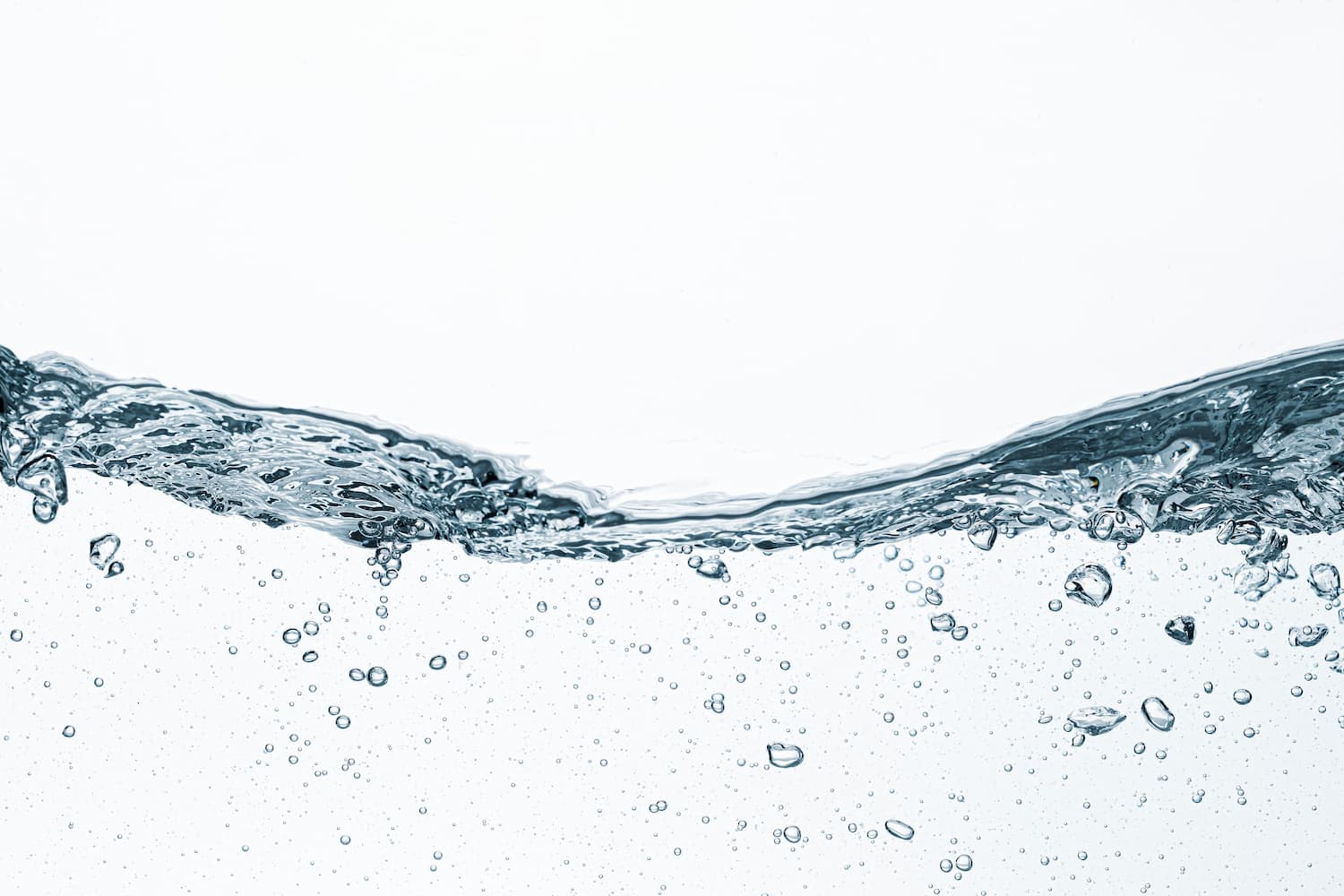
World Water Day aims to raise awareness of the lack of drinking water in many regions of the world.
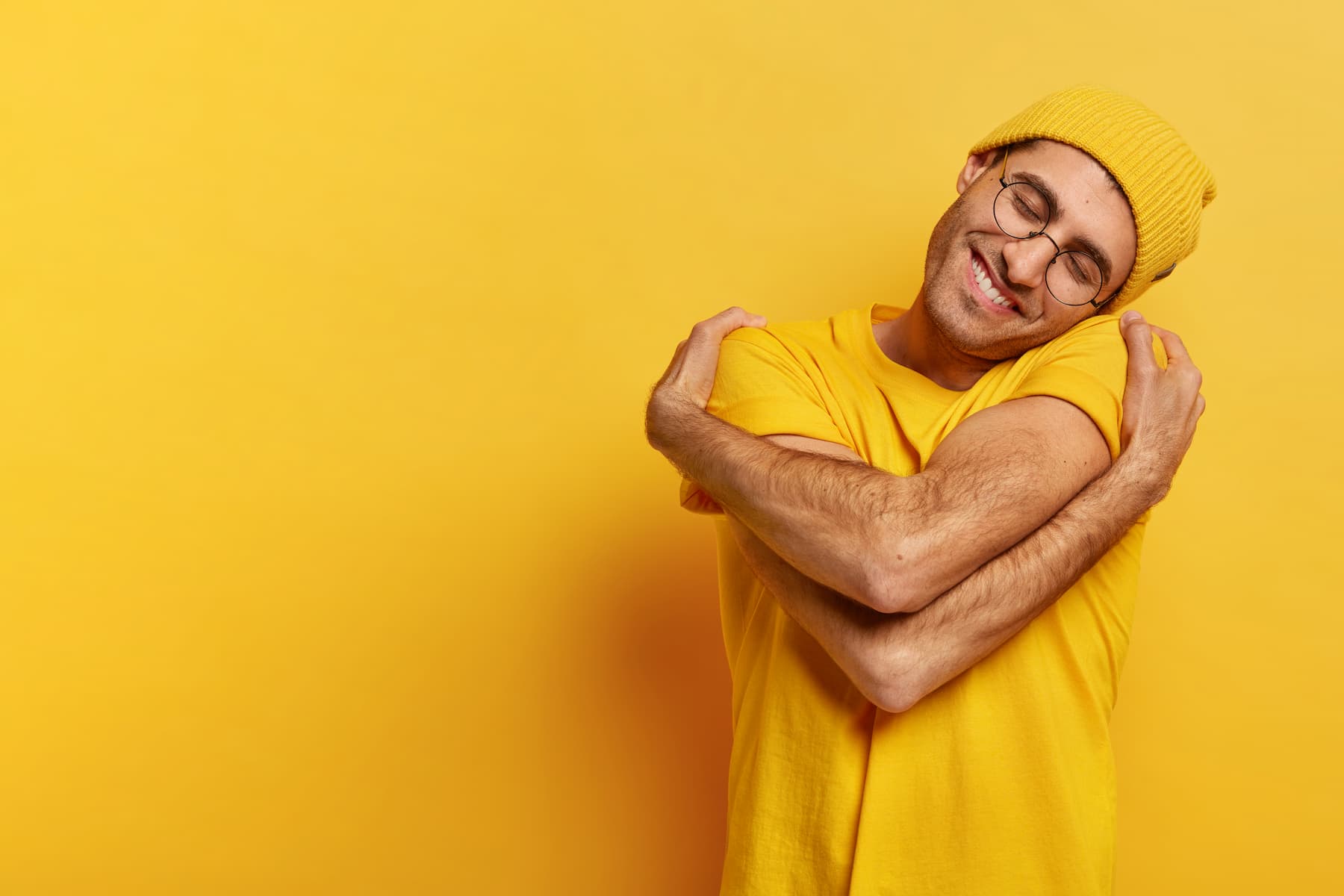
How many Poles are single and why have they chosen to live alone?
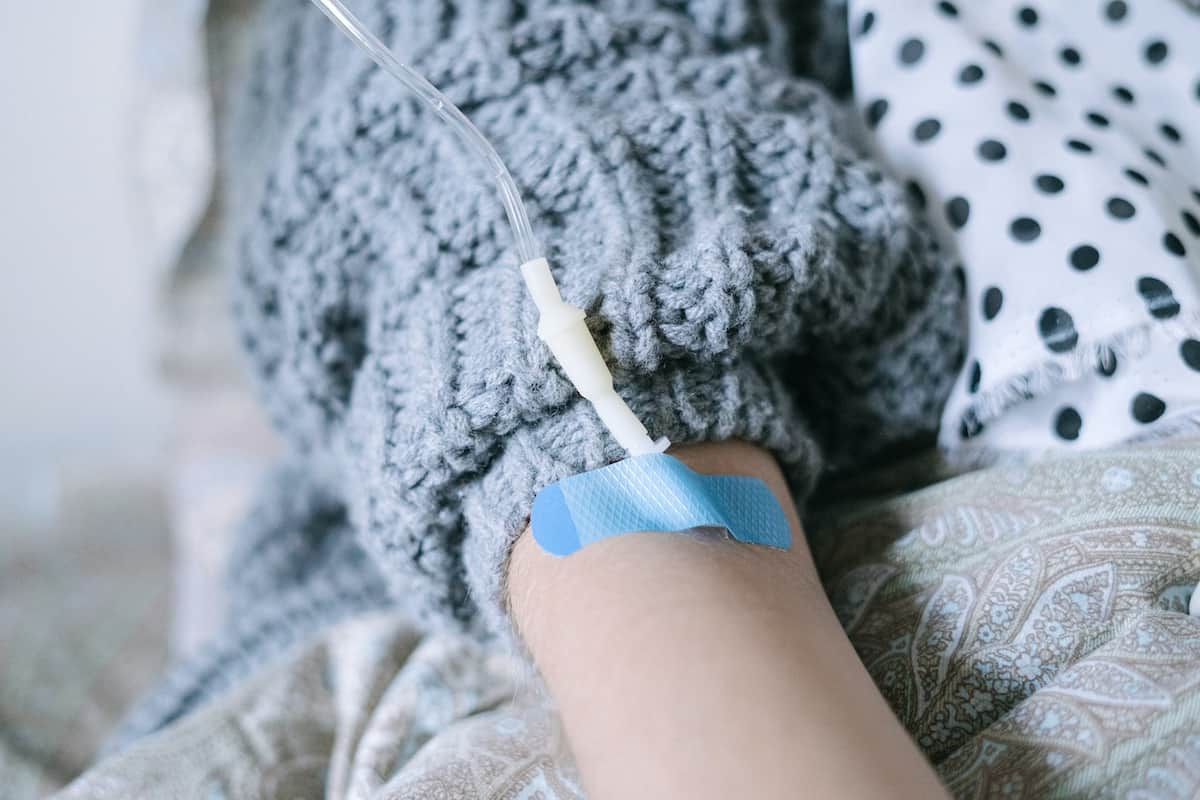
World Cancer Day encourages research and healthy lifestyles.



